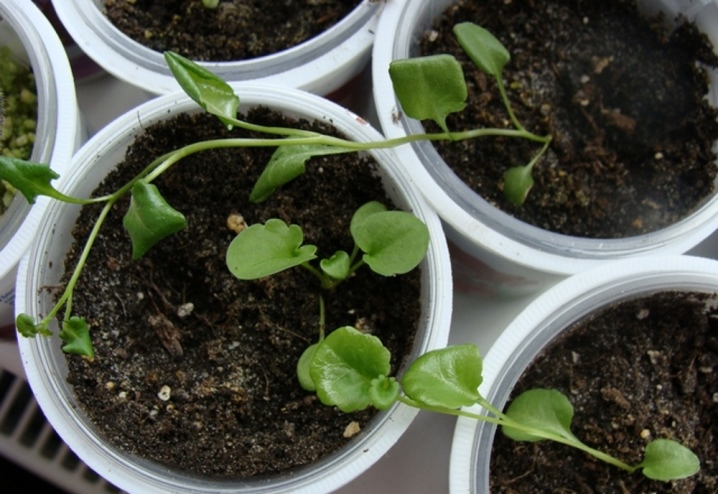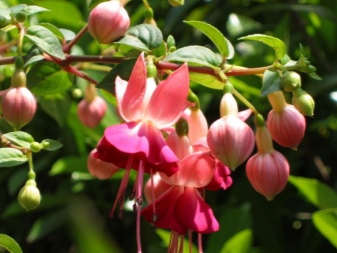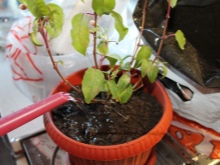How to grow fuchsia from seeds?

A native of South America, the beauty fuchsia is deservedly popular all over the world. Therefore, the issue of seed reproduction of a flower is of interest to many, especially since even a novice florist can grow it independently.
Features of seed growing fuchsia
Fuchsia is a perennial plant and most often propagates at home by cuttings. However, many gardeners are more creative and grow the plant from seed. This method of reproduction is very fun and allows you to get offspring with interesting color of flowers, different from the mother. This is explained by the fact that growing fuchsia from seeds does not guarantee that the young plant will retain most of the varietal traits inherent in the parent.
But for breeding purposes, the seed method is the best fit, and allows you to get flowers of various shades.

Breeding stages
The process of growing fuchsia from seeds includes several stages, each of which requires a grower to follow a number of important recommendations.
Seed collection
The collection and preparation of seed material is a very responsible procedure, since the success of the entire event depends on the quality of the seeds. So, fuchsia seeds can be purchased at a specialty store, or you can collect it yourself. To do this, as soon as the flower buds begin to bloom, use a cotton swab to collect pollen from the male flower and carefully transfer it to the female flower, lubricating the pistil. In this case, the mother flower is freed from the anthers, carefully removing them with tweezers.
Further, fuchsia is lightly sprayed with water, thereby increasing the likelihood of successful pollination.


If there is only one bush available, then artificial pollination is performed on one plant. For this pollen from flowers of one shade is transferred to the pistils of flowers with other shades... In order to avoid over-pollination of flowers by insects, fuchsia is covered with gauze and await the appearance of fruits. After they have formed, the cheesecloth is removed and the color of the fruit is monitored.
At the first stage, they will have a red hue, then they will turn purple, and at the final stage of ripening they will be colored purple. At this point, they are carefully cut and placed in a dry, warm place to dry. After a few days, the fruits are cut and small light brown seeds are taken out, which look like garlic cloves, only flat.
They are also dried on a sheet of paper, laid out in cloth or paper bags and stored until spring.


Substrate preparation
The next important step in growing fuchsia from seeds is the preparation of a nutritious soil mixture. You can buy it ready-made in the store or prepare it yourself. To do this, take 3 parts of turf, mix it with two parts of peat and one part of sand, after which it is calcined in an oven at a temperature of 200 degrees for 20 minutes. If the oven was not available, then the prepared substrate is spilled with boiling water or a warm solution of pink potassium permanganate.
This allows you to rid the soil of pathogenic microflora and prevents the risk of fungal infections. Then the substrate is allowed to cool, after which it is scattered over low and fairly wide containers with a drained bottom.
Previously, 2-3 cm of expanded clay or river pebbles are placed on the bottom of the containers, thus forming a drainage layer.

Landing
After the substrate is prepared, you can start sowing the seeds. For this, the seeds are mixed with dry sand and scattered over the surface of the soil mixture. Then the planting is irrigated from a spray bottle, covered with plastic wrap or glass and placed in a bright place. The planting is ventilated daily for 15 minutes and moistened if necessary. Germination of fuchsia seeds occurs quite quickly, and after 3 weeks the first shoots appear.


Good results are obtained by planting seeds in peat tablets, previously soaked in warm water. After they swell well, they are laid out in prepared containers and one seed is placed in each of them. Egg cells can be used as a container. The container with the tablets is also covered with a film, periodically ventilated and moistened.
The germinated seedling fills the entire tablet with its roots in a month, after which it must be transplanted.

Creation of conditions
In order for fuchsia seeds to germinate quickly and amicably, it is necessary to create a number of conditions for them. So, the air temperature in the room where the boxes with seedlings are located should be from 18 to 25 degrees... In this case, the soil should be in a wet state, however, stagnation of liquid is unacceptable. If water accumulates in the seed germination zone, then the substrate will become moldy, and the seed will rot before it can germinate.
For in order not to oversaturate the soil with moisture, watering is carried out by spraying from a spray bottle or by installing containers in a pan with water... At the same time, the earth absorbs only the necessary amount of moisture for seed germination. If everything is done correctly, seedlings will appear in 20-30 days.
After the emergence of sprouts, the airing time of the planting is gradually increased, and soon the greenhouse is completely dismantled.

Picking
After 2 full-fledged leaves appear on young fuchsias, the sprouts are seated in separate containers - they dive. As a container, take plastic cups with a volume of 200 ml with a hole in the bottom. A nutritious substrate is poured into them, not forgetting to put a little expanded clay on the bottom, after which sprouts are planted, trying to preserve the earthen lump as much as possible. Preliminarily, the soil of the common container in which the seedlings grew is moistened. The procedure is performed on the growing moon.
After a dive, fuchsia is periodically sprayed from a spray bottle and fed twice a month with the help of mineral fertilizers. If the seedling grows strongly, it must be pinched, cutting off the top and forming a lush and beautiful flower.
After the cup becomes small, the plant is transplanted into a more spacious pot, without burying the root collar.



Sprout care
In order to grow a dense and healthy flower from a young sprout, it must be properly looked after.
- So, immediately after planting, young shoots are removed for a couple of days in a shaded place, allowing the flower to adapt better in a new pot.
- Watering the plants is carried out with settled water at room temperature, preventing the top layer of the soil from drying out and forming a dense crust.
- As a top dressing, use any mineral preparations for flowering plants or fertilize a flower with the help of folk remedies. Good results are obtained using infusion of banana peel. To prepare the composition, 3 skins are poured with two liters of water and infused for 5 days. Then the resulting infusion is diluted with water in a 1: 1 ratio and watered with fuchsia. You can also use an infusion of wood ash, for the preparation of which 2 tbsp. l. ash is poured with a liter of water and left for a couple of days, as well as a tincture of a handful of onion husks and three liters of water, infused for two days.Some growers advise occasionally watering fuchsia with aquarium water, and this can only be done on wet soil.



If you do everything according to the rules and do not neglect the advice of experts, then the fuchsia grown from seeds will begin to bloom in the second year of life and will delight the owners with bright flowers and gorgeous greens.
For more information on how to grow fuchsia from seeds at home, see the next video.







































































































The comment was sent successfully.